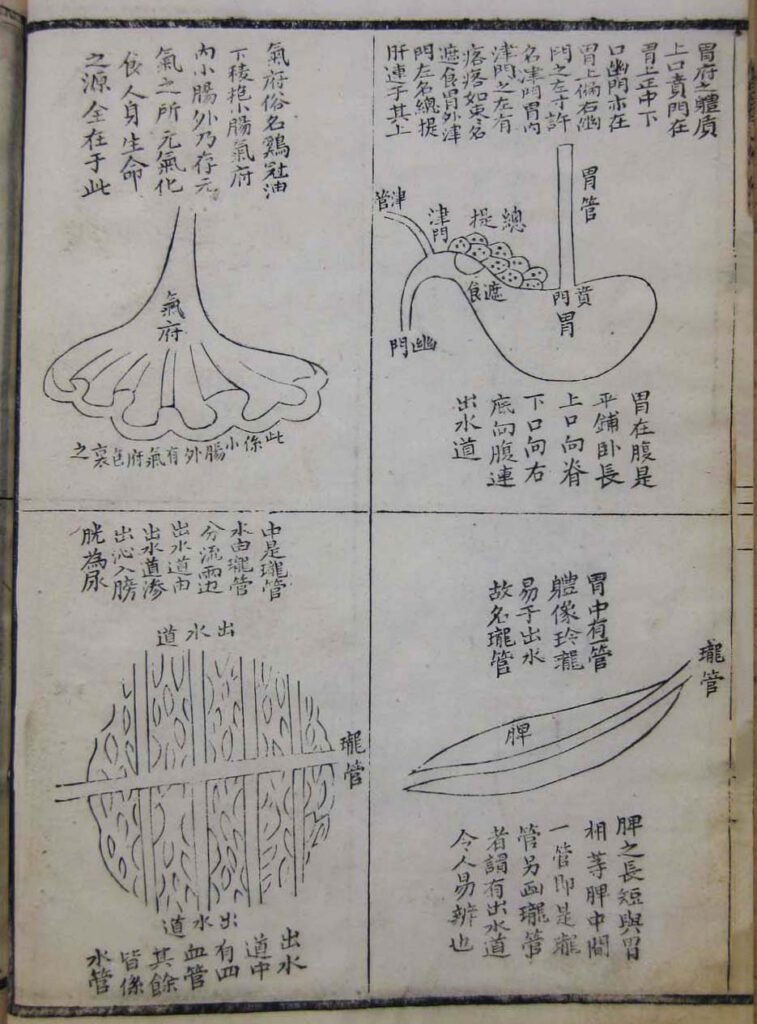Diagrams of the internal organs

Diagrams of the internal organs from Wang Qingren (1768-1831), Correcting the Errors of Doctors (Yilin gaicuo), first printed in 1830. Jinqi shuye deji woodblock edition, 1847. In the library collection of the Needham Research Institute – Besides revising older depictions of the organs, Wang focused attention on structures that had not been previously discussed in medical […]
Diagram of the heart

Diagram of the heart from Wang Qi (jinshi degree holder of 1565), Collected Diagrams of Heaven, Earth, and Man (Sancai tuhui), Chongzhen reign (1628-44) reprint of 1609 edition. In the collection of the Harvard-Yenching Library, Harvard University – This famous encyclopedia was a collection of illustrations of myriad aspects of the “three realms” of Heaven, […]
The diagram of the stomach

The diagram of the stomach from Zhang Jiebin (1563-1640), Illustrated Wing of the “Classified Canon” (Leijing tuyi), woodblock edition, preface dated 1624 From the collection of the Harvard-Yenching Library, Harvard University – This image of the stomach accompanies Zhang’s illustration of the pathway of the Foot Yang Brightness Stomach Channel. The upper text begins with […]
The hand lesser yin heart channel

The hand lesser yin heart channel (two facing pages) from Zhang Jiebin (1563-1640), Illustrated Wing of the “Classified Canon” (Leijing tuyi), woodblock edition, preface dated 1624. From the collection of the Harvard-Yenching Library, Harvard University – In writings on acupuncture, it became common to pair an image of an internal organ with an image of […]
Diagram of the Inner Landscape

Diagram of the inner landscape from Zhang Jiebin (1563-1640), Illustrated Wing of the “Classified Canon” (Leijing tuyi), woodblock edition, preface dated 1624. From the collection of the Harvard-Yenching Library, Harvard University – In his magnum opus, The Classified Canon (Leijing), the physician Zhang Jiebin reorganized the contents of the Yellow Emperor’s Inner Canon by topic. […]
